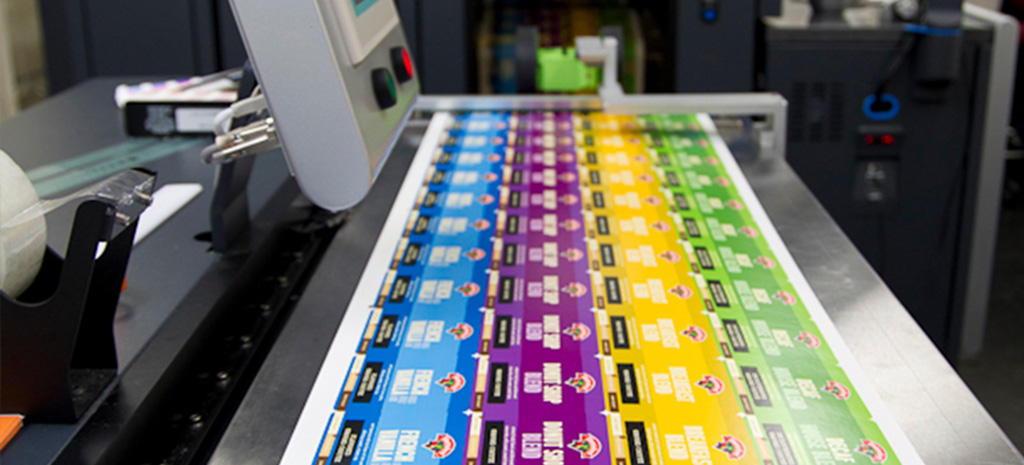Flexographic printing is a widely used method in the packaging and labeling industry, known for its efficiency and versatility. One of the key aspects that influence the quality of the prints is the registration in flexographic printing. Ensuring correct registration is crucial for producing sharp and clear images, which is paramount for branding and marketing professionals. Let’s delve deeper into this essential component of flexographic printing.

What is Registration?
In the context of printing, registration refers to the alignment of different colors and printing elements on the same image. Proper registration ensures that the various colored inks are perfectly aligned, preventing any blur or misalignment in the final print. This is particularly important in flexographic printing, where multiple colors are often used to produce vivid and detailed images.
The Role of Registration in Flexographic Printing
Flexographic printing is favored for its ability to handle a variety of substrates and its rapid production speed. However, the process requires precise alignment of the printing plates to achieve high-quality results. Misaligned plates can lead to distorted images, inaccurate colors, and a finished product that doesn’t meet quality standards.
Why Accurate Registration is Vital
Accurate registration in flexographic printing is essential for ensuring that the final product meets the desired specifications. Without proper registration, even the most beautifully designed artwork can be rendered ineffective, impacting the brand’s image and the product’s marketability. Therefore, diligent attention to registration details is a critical step in the printing process.
Challenges in Maintaining Registration
Maintaining perfect registration involves overcoming several technical challenges. These include variations in substrate thickness, plate wear, and machine calibration. Each of these factors can affect the alignment and quality of the prints, necessitating careful monitoring and adjustments throughout the printing run.
Overcoming Registration Challenges
To overcome these challenges, operators must regularly calibrate their printing presses and frequently monitor print quality. Utilizing advanced registration systems can also help in minimizing errors and maintaining consistent quality. These systems automatically adjust the interfaces of printing elements, leading to more accurate results.
Technological Advancements in Flexographic Printing
The advancement in technology has significantly improved registration accuracy in flexographic printing. Modern printing presses are equipped with sophisticated registration controls that adjust in real-time, ensuring outstanding print quality even at high speeds. These innovations allow for greater precision and efficiency, benefitting marketers tasked with producing eye-catching packaging quickly.
Innovative Registration Tools
Incorporating tools such as computerized plate registration systems and optical alignment sensors can dramatically reduce registration errors. These tools offer precise control and feedback mechanisms, enhancing both the quality and speed of the printing process.
Comparing Flexographic Printing to Other Methods
When comparing flexographic printing to other methods, like digital printing printing differences, the importance of registration becomes even more apparent. While digital printing directly applies images to a substrate, flexographic printing involves multiple steps that demand impeccable alignment.
Advantages Over Digital Printing
Despite the complexity, flexographic printing offers benefits such as cost-effectiveness for large runs and the ability to print on various materials. Moreover, with the right technological aids, registration challenges can be effectively managed, bolstering its reputation in the industry.
The Future of Registration in Flexographic Printing
As the industry continues to evolve, innovations in registration technology will likely enhance the capabilities of flexographic printing. These advancements promise to automate much of the registration process, reducing human error and enhancing productivity. The future looks promising for marketing professionals seeking cutting-edge printing options.
Potential Developments
Future developments may include AI-driven systems that predict and correct registration issues before they occur, as well as improvements in press automation that ensure precise control over the entire printing process.
Conclusion
Understanding and managing registration in flexographic printing is vital for producing high-quality printed materials. With technological advancements, the process is becoming more reliable and accurate, offering immense benefits to the marketing and packaging industries. By staying informed about these innovations, professionals can ensure their print materials meet the highest standards, thereby strengthening their brand presence in the market.

FAQs
What is the main function of registration in flexographic printing?
The main function of registration in flexographic printing is to ensure precise alignment of the colors and images to produce clear and accurate print outputs.
How can printing quality be improved?
Printing quality can be improved by using advanced registration systems, regularly calibrating printing presses, and conducting frequent quality checks during printing runs.
What challenges affect registration in flexographic printing?
Challenges affecting registration include substrate thickness variations, plate wear, and machine calibration issues, each requiring diligent attention to maintain print quality.
Read more about flexographic printing and its technology impacts for a deeper understanding of its advancements and applications.






